Unemployment Rate by Schooling
It’s also interesting to see the unemployment rate by schooling completed (p.23 of the National Center for Education Statistics study).
The total 2002 high school sophomore class was surveyed for employment status in 2012. Unemployed was 11% for the whole class, with this unemployment breakdown by educational level (Figure 1. High School and Unemployment). Surprising is that after 10 years only 3% of the 2012 sophomore class did not have a high school or GED, yet they contributed one-quarter of all the unemployed from their school class. Also one-third had earned bachelor degrees, yet they accounted for only 5.2% of the unemployed.
Note: in June 2012, the overall unemployment rate was 8.2%
Employment prospects rise with increased education. Although many sample post-high school education, for nearly half of the population, Kindergarten through Grade 12 is the predominant way they enter the work force with.
Consider Figure 2, a chart of jobs available by education level, students at that level, portion of all available jobs, and salary. Nearly 40% of all jobs offered require a high school degree or less yet those jobs were chased by 45% of the work force. This significant numbers cannot be sloughed off by saying everyone should get more education to get a better job.
The K-12 curriculum should have a prime goal of developing the academic and craft work skills necessary to succeed for the 40% jobs that 45% of students are aiming at.
Education Goals Development of employment skills, with maximal personal growth, and awareness of societal rights and responsibilities.
High School Graduation Rate focuses on information in the National Center for Education Statistics study
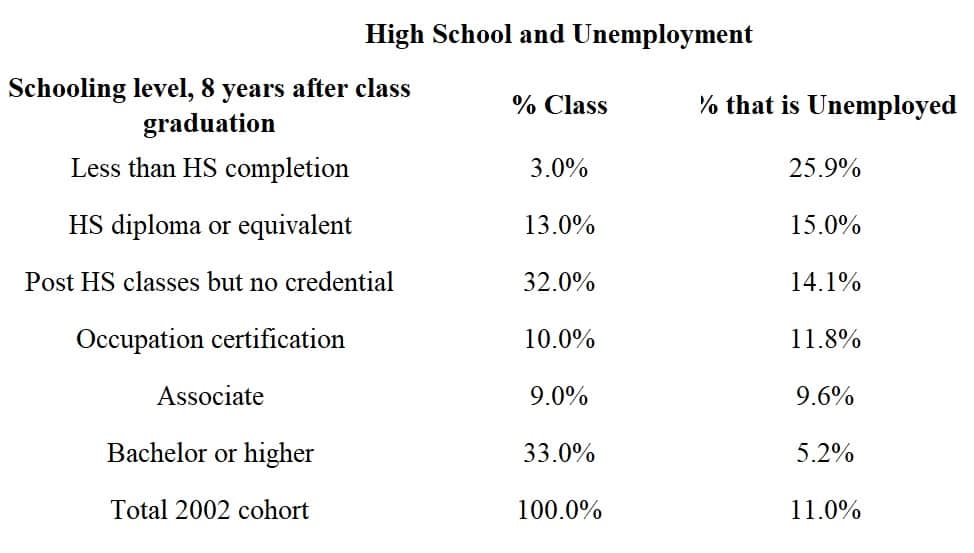
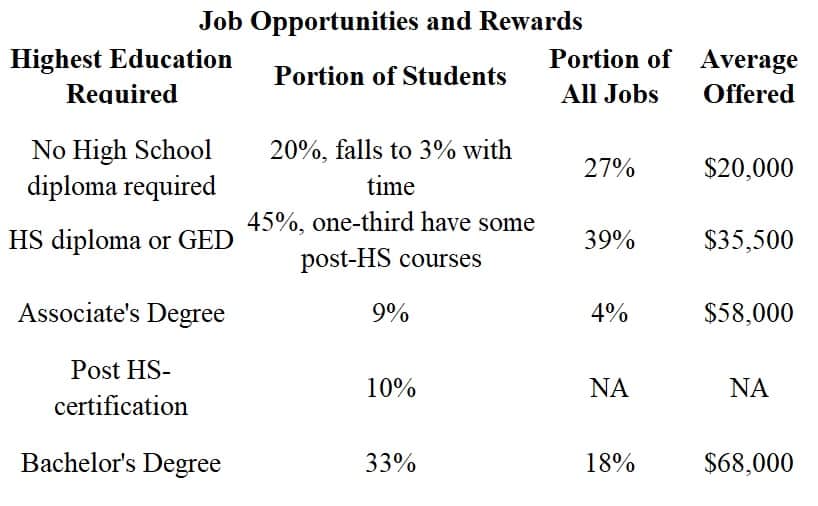

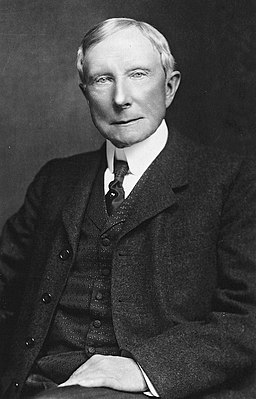

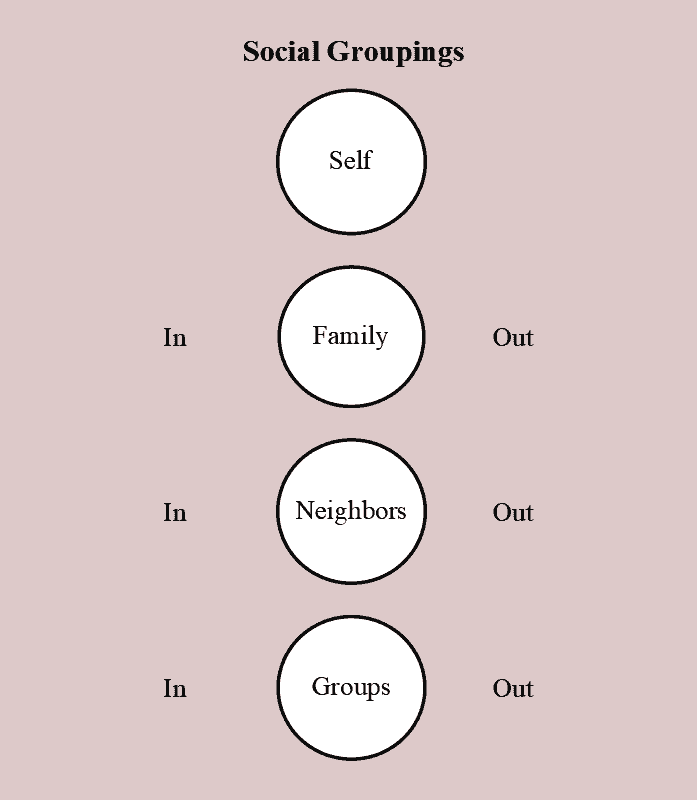

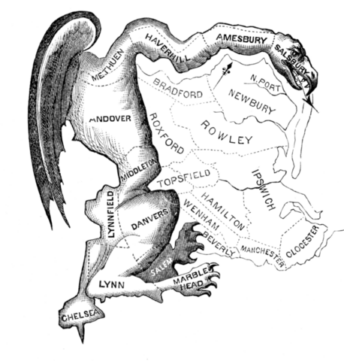
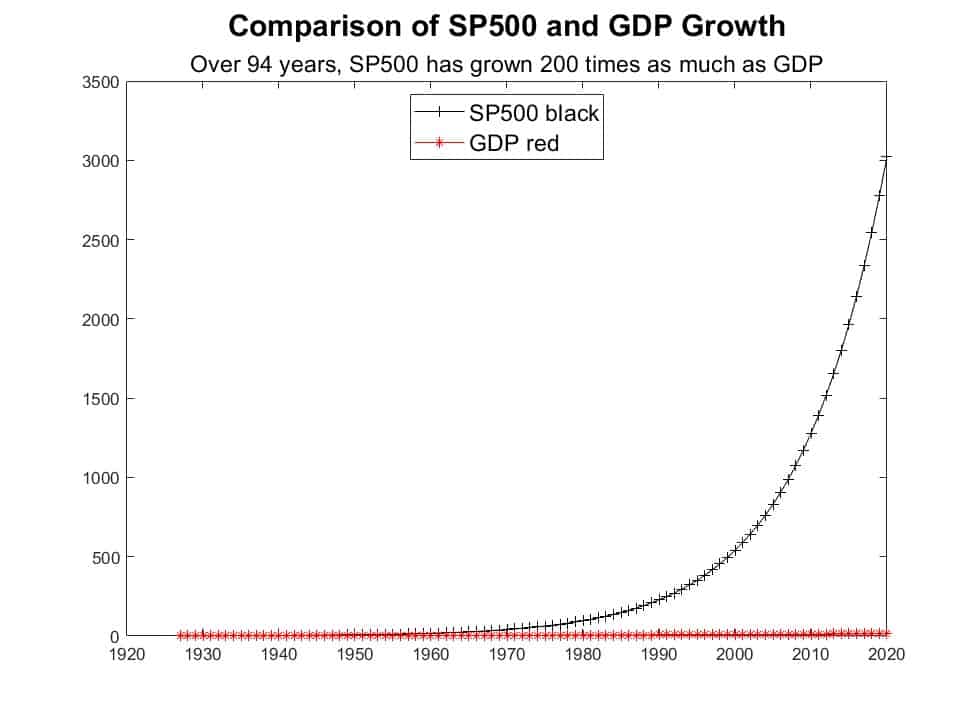

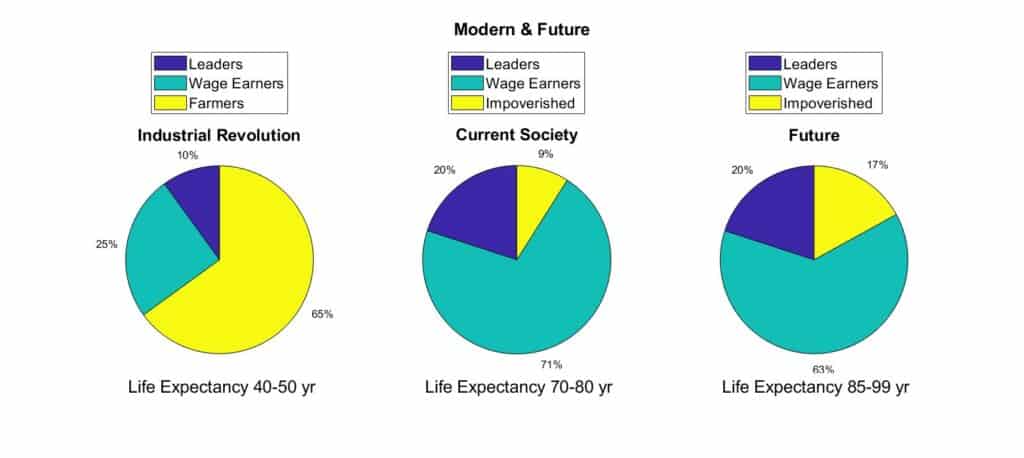
2 thoughts on “Unemployment Rate by Schooling”